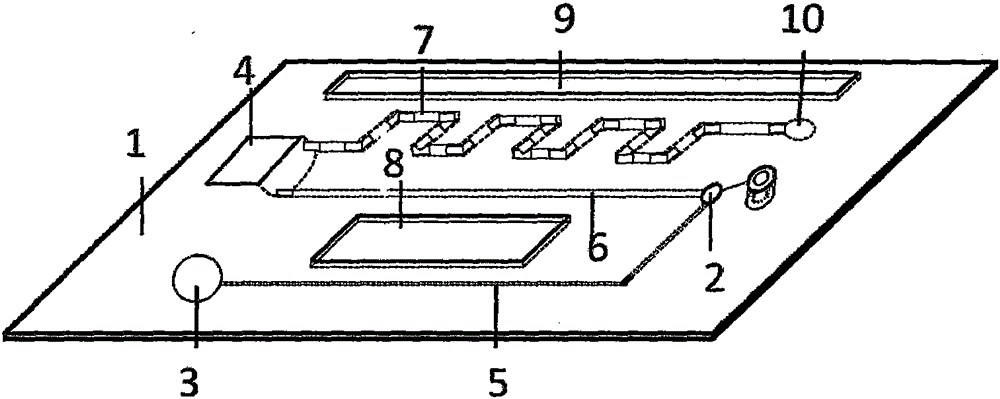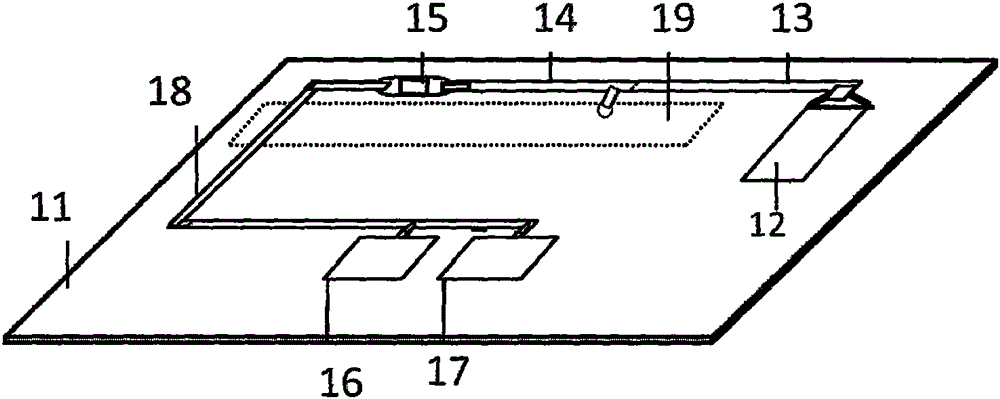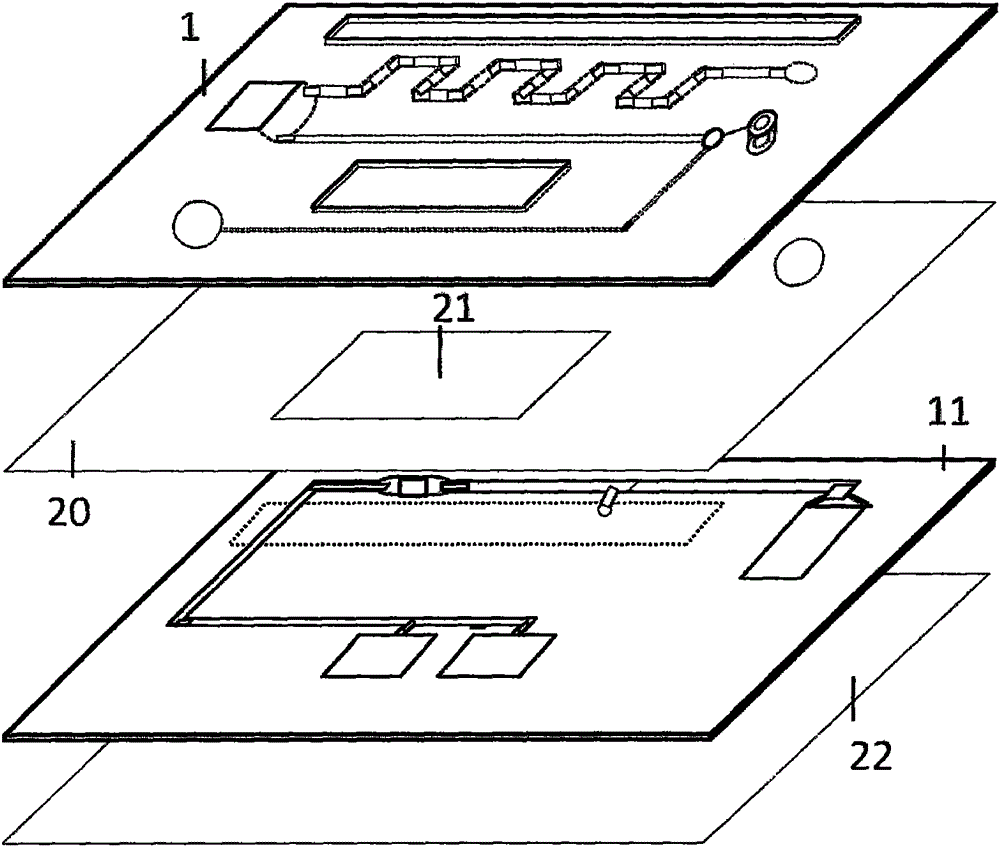Magnetic micro-particle chemiluminescence micro-fluidic chip for quantitatively detecting C-reaction protein
A microfluidic chip and reactive protein technology, applied in the field of clinical medicine in vitro diagnosis, can solve the problems of high non-specific background, complex detection process, low sensitivity, etc., to reduce non-specific interference, high degree of integration, accurate and reliable results Effect
- Summary
- Abstract
- Description
- Claims
- Application Information
AI Technical Summary
Problems solved by technology
Method used
Image
Examples
Embodiment 1
[0058] Embodiment 1: horseradish peroxidase-luminol (HRP-luminol) system is used for the detection of C-reactive protein
[0059] 1. Fabrication of microfluidic chip
[0060] 1) Antibody labeling: i) Enzyme-labeled antibody: Weigh 25 mg of HRP, dissolve it in 1.25% glutaraldehyde solution, and let it stand overnight at room temperature; Control at 1ml / min, collect the brown effluent; dilute 12.5mg of the anti-C-reactive protein antibody to 5ml with normal saline, add dropwise to the HRP solution under stirring; use 0.25ml of 1M pH9.5 carbonate buffer, and continue stirring for 3 hours Add 0.25ml of 0.2M lysine, mix well, and let stand at room temperature for 2 hours; add an equal volume of saturated ammonium sulfate dropwise while stirring, and place at 4°C for 1 hour; centrifuge at 3000rpm for half an hour, and discard the supernatant. The precipitate was washed twice with half-saturated ammonium sulfate, and finally the precipitate was dissolved in a small amount of PBS of ...
Embodiment 2
[0069] Embodiment 2: Alkaline phosphatase-adamantane (ALP-AMPPD) system is used for the detection of C-reactive protein
[0070] 1. Fabrication of microfluidic chip
[0071]1) Antibody labeling: i) Enzyme-labeled antibody: 2.5mgALP (50IU / mg), add 200uL of 100mM PB (pH6.8) containing 1.25% glutaraldehyde, mix well, and react overnight at room temperature; Stir, dialyze to 50mMPBS (pH7.2), 12 hours, change the medium 4 times; 1.5mg C-reactive protein antibody is dissolved in 100uL 1M carbonate solution (pH9.0); add the activated AP to the prepared protein liquid, Mix well, react at 4°C for 24 hours, add 10 μL of 200mM lysine solution, mix well, react at 22°C for 2 hours; dialyze at 4°C to 50mMPBS (pH7.2), 12 hours, change medium 4 times ; Centrifuge, take the supernatant, use 50mMTBpH7.4+0.6%BSA+0.05%NaN 3 Dilute 10 times and store at -20°C. ii) Magnetic-labeled antibody: accurately pipette 30 μL of streptavidin-labeled magnetic particles with a concentration of 1 mg / L, where...
Embodiment 3
[0079] Example 3: Magnetic Particle Size Screening
[0080] The particle size of magnetic microspheres is small, the specific surface area is large, and the surface contains active groups, so the coupling capacity is large, but the size of magnetic particles is too small to be conducive to magnet collection, so the magnetic particle size screening is carried out.
[0081] Refer to Example 2 for other experimental conditions, and the particle size of the magnetic particles is determined according to the following scheme.
[0082] Magnetic particle sizes of 0.1 μm, 0.5 μm, 1.6 μm, 2 μm, 3 μm, and 10 μm were selected to label the anti-C-reactive protein antibody. The permanent magnet whose magnetic size has been optimized is used in the detection to fix the height of the magnet.
[0083] The experimental results are as follows:
[0084] The particle size of magnetic particles increases sequentially from 0.1μm, 0.5μm, 1.6μm, 2μm, and 3μm. The interference increases at 3μm, and d...
PUM
| Property | Measurement | Unit |
|---|---|---|
| Volume | aaaaa | aaaaa |
| Width | aaaaa | aaaaa |
| Depth | aaaaa | aaaaa |
Abstract
Description
Claims
Application Information
 Login to View More
Login to View More - R&D
- Intellectual Property
- Life Sciences
- Materials
- Tech Scout
- Unparalleled Data Quality
- Higher Quality Content
- 60% Fewer Hallucinations
Browse by: Latest US Patents, China's latest patents, Technical Efficacy Thesaurus, Application Domain, Technology Topic, Popular Technical Reports.
© 2025 PatSnap. All rights reserved.Legal|Privacy policy|Modern Slavery Act Transparency Statement|Sitemap|About US| Contact US: help@patsnap.com



